|
Related FAQs: Tank
Troubleshooting1, FAQs2,
FAQs 3, FAQs
4, FAQs 5, FAQs 6,
FAQs 7, FAQs 8, FAQs
9, Treating
Disease, Puffer Disease,
Related Articles: The
Three Sets of Factors that Determine Livestock Health,
Toxic Tank Conditions, Environmental Disease (incl. Lymphocystis), Nutritional Disease, Infectious Diseases, Parasitic Diseases, Wound
Management (/aquarists), A Livestock
Treatment System,
/The Conscientious Aquarist Series:
Tank Troubleshooting:
Livestock, Part 2 of 2
|
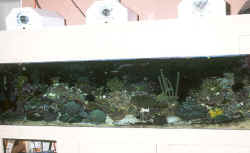
|
|
By Bob Fenner
|
|
Back to Part 1 of 2 of Tank
Troubleshooting
| The third and final category of factors includes
three aspects of pathogenic presence. Yes/no; are they there and in
what numbers of species, individuals on the hosts, and their state
of infectiveness... |
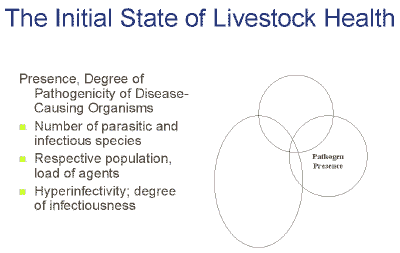
|
|
Now, let's "turn the tables" and consider these
three sets of factors that determine livestock health in the way
of what you can do to prevent and control loss of health.
It bears repeating that we should aim for accomplishing what
we can in each of the three categories.... though if two are
optimized, the equation of health/disease is generally tilted in
favor of health.
|
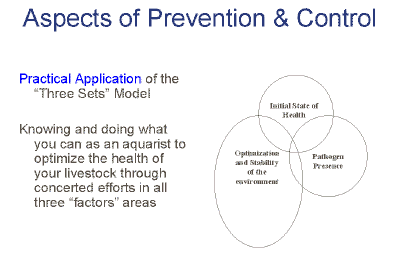
|
|
Though not always easily done, we strive to select for the best
species and the best individuals of those species for our
use.
How to know what these species are... what they should look
like? Books, the Net, hobbyist gatherings (clubs, conferences), a
guru/fellow fish hobbyist with more experience with the
species... and some techniques even though you know what you
know, are seeing what you're seeing...
|
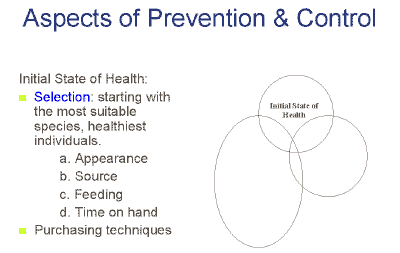
|
|
Don't buy poorly colored or overly colorful livestock... Know
the natural and captive behavior to expect from the species,
size, sex individuals you're observing.
Example of Basses (family Serranidae) that typically hide when
first placed in captivity, one that doesn't. Liopropoma and
Variola spp.
|
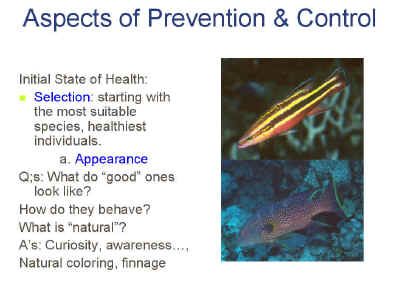
|
|
There are numerous examples of the same or related species from
different locales displaying widely varying survivability,
behavior and tolerance to wide and varying environmental
conditions.
Ex.s Indo-Red Sea Pygoplites vs. western Pacific. Odonus niger
triggers in the Red Sea versus elsewhere...
|
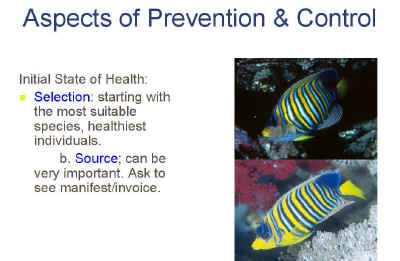
|
| If the intended livestock doesn't eat,
don't buy it... if it stops eating at home... is this to be
expected? Some species do only eat occasionally (mainly larger,
predaceous species like Sharks, some LPS...). |
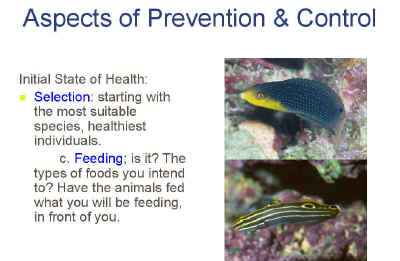
|
|
Very important... as cold-blooded animals have very
"delayed" reactions to different types of environmental
insults/challenges.
Ex. of Holacanthus clarionensis years back... thermally
doomed.
|
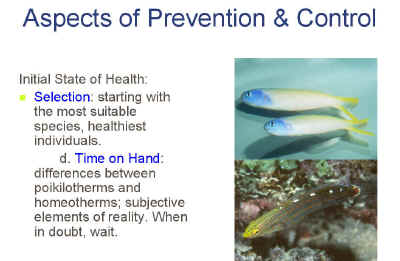
|
|
All legitimate dealers can and will identify the geographic
origination of their stocks, how long they've had them on
hand, what, if anything they have done to acclimate, condition
them.
When/where in doubt with "new" livestock, leave a
deposit and come back in a few days...
|
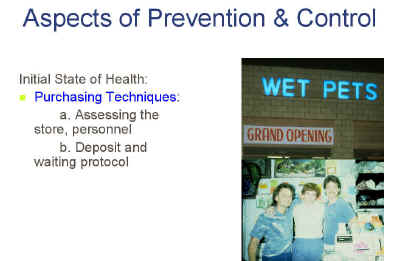
|
| Is this obvious? |
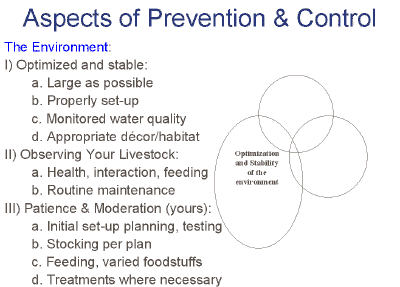
|
|
Just as with your own health, you need to know what the common
infectious and parasitic complaints the particular livestock you
keep may suffer, and how to prevent, react to their
presence.
There is a scale of escalation in attending to these
diseases... with chemical treatments ranking last.
|
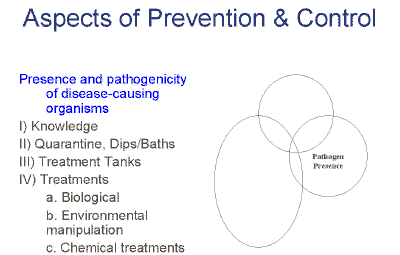
|
| Self explanatory: How would you know Health w/o an
understanding of disease? |
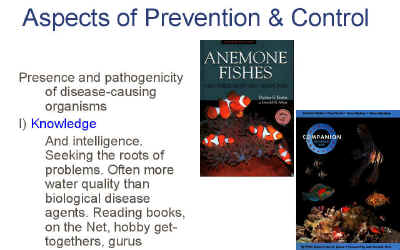
|
| Don't count on anyone else to properly prepare
your livestock for placement... Unless you are assured of the
resoluteness of their operations, do observe, restrict and
"harden" most all new livestock before mixing in with
established main/display systems. |
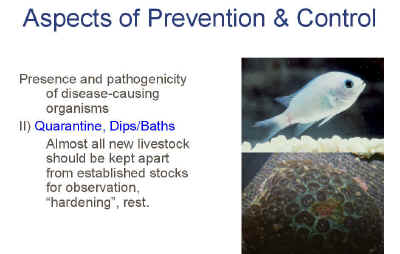
|
| Should be similarly outfitted as any live-holding
system... with a cover, decor/hiding spaces, heater, possibly
lighting (for photosynthetic species)... regularly monitored (at
least daily) for chemical integrity... and not coppered for more
than a two week interval... |
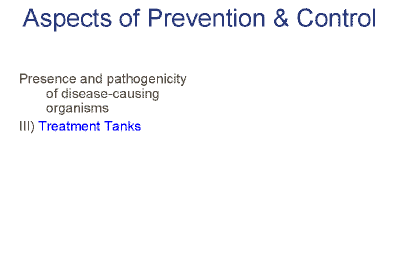
|
Back to Part 1 of 2 of Tank
Troubleshooting
|
|

